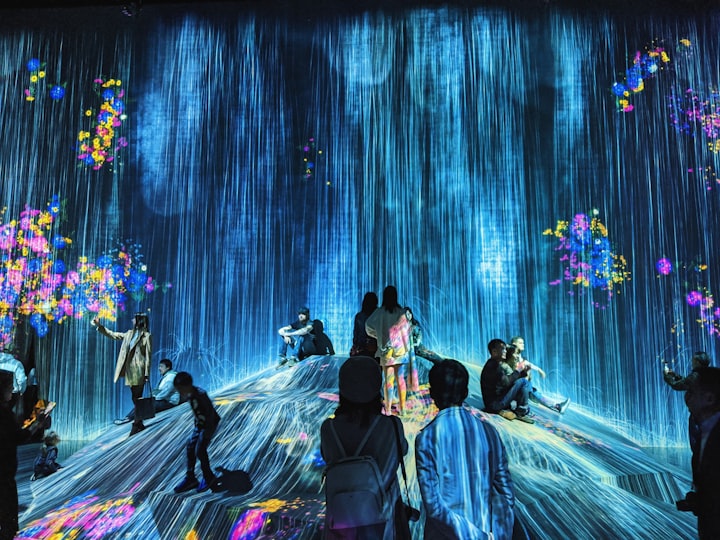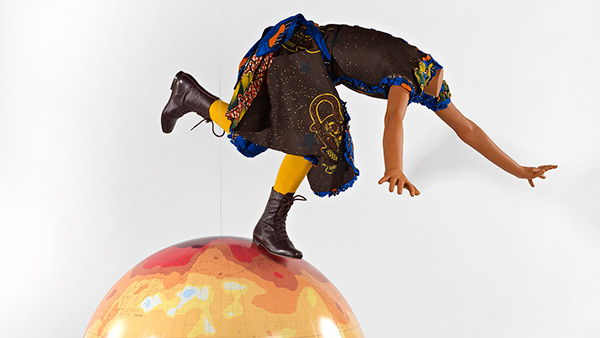Art Mediation: Creative Approaches with Invisible Pedagogies, Andrea De Pascual
Duration: Feb 10 – Mar 10, 2021
Fee: 172€
Max seats: 30
Enroll before: Feb 6, 2021
Dedication: 3 hrs/week
In this course, taught by Invisible Pedagogies, we will explore the best practices for developing cultural mediation and educational programs in artistic centres, taking into account the local context and audience diversity.
Invisible Pedagogies is a collective based in Madrid who design mediation and educational programs for art institutions. They emphasise the importance of inclusivity in the arts in relation to gender, race, age and marginalised communities. This course will build off their approaches to mediation that have included intergenerational workshops or artist residences in educational centres.
We will work with resources and tools to develop educational programs that are capable of involving the context in which the institution is located and opening an active dialogue between the institution and the public.
Applying the DAT methodology (detect, analyse and transform), we will address fundamental questions about art educational programming such as: what kind of mediation do I want to develop? How can I activate cultural processes with different communities? What proposals can I develop to promote cultural inclusion?
This course is aimed at cultural managers, curators, educators, and those interested in developing educational and art mediation programs within the artistic context. Throughout the course, participants will develop a rough sketch of their own program – from identifying their personal position and goals, to engaging inclusive audience approaches and applying creative techniques from the art world.
Week 1. Introduction
- Introduction to the program and course overview.
This is a one-hour-only welcome session. The lecturer will introduce the program and participants will introduce themselves. No prior preparation is necessary.
Week 2. Invisible pedagogies and the DAT method
- Definition of invisible pedagogies. Where to find them in cultural institutions?
- DAT method
- The power of directionality: explicit and non-explicit learning
- Performativity: new ways of thinking, doing and being
When it comes to addressing an art mediation project, the first thing we must do is build a statement. For this, it is essential to bear in mind that no institutional context is neutral and that varieties of learning occur invisibly. The theme of this session will, therefore, revolve around the invisible pedagogies of cultural institutions and how, through the DAT method, we can make them visible.
Week 3. Pedagogical formats
- Formats and practices in art mediation.
- Art mediation as a creative practice.
- Links and transfers between different agents involved in art mediation.
With a clear statement of our position as art mediators, it is time to think of how this is going to look in practice: what formats can I develop? In what way? There are a wide variety of established art mediation formats that we can learn from, but in order to develop an approach that fits with our interests and aims, it is essential to understand our role as creators of experiences and cultural producers. In this session, we will explore the relationships between creative processes and educational strategies.
Week 4. Diversity and inclusion
- Diversity and representation: the public is not a neutral category.
- Normativity and dissidence of gender, sexuality, race and abilities.
- The value of the bodies: thinking and feeling from the realities we inhabit.
To develop a project in art mediation, it is essential to analyze the invisible pedagogies of the contents on offer and the participants to whom they are addressed. We have to be aware that diversity is a reality in our society but it is not always reflected in art institutions. The transformation of institutions to welcome diverse audiences involves developing new skills that enable learning, communication and development with different bodies, cultures and identities.
Week 5. Creative strategies
- Claiming pleasure for mediation processes.
- Divergent thinking and collaborative work as key strategies.
- Visual voice: a new place to generate discourses.
With awareness of the political and social potential of art mediation, to finish the course, we propose to address all these issues from experiences that place pleasure and amusement in the centre. In this session, we will deepen how to generate practices in cultural mediation by working with contemporary artistic strategies such as estrangement, de-familiarization and surprise.
Andrea De Pascual is interested in activating art + education not only as a space for critical thinking but also as a tool for citizen participation in political, social and environmental issues. She is an educator with a master’s degree in Art Education from New York University through a Fulbright scholarship. She is a founding partner of Invisible Pedagogies, where she works as general coordinator. In her role, she designs and implements projects in cultural mediation, teacher training and research. She has worked and collaborated in several cultural institutions such as Matadero Madrid and Brooklyn Museum, as well as organizations dedicated to contemporary art such as Art21 or the Hemispheric Institute of Performance and Politics. She is co-author with David Lanau of the book “Art is a way of doing (not a thing that is done).”
Invisible Pedagogies collective was founded in 2009 with the intention to explore the interstices of the field of art + education. Our beginnings were based in theory, but in 2011, we sought to put into practice the issues that we were addressing conceptually. The field of educational practice in art institutions was an ideal space in which to experiment, investigate, fail and generate new ways of doing and thinking in art and education. Since then, art mediation has been one of the main occupations of the collective. We have worked in a wide variety of museums and art centres, generating new formats, such as intergenerational workshops or artist residences in educational centres. We use new methodologies with the challenge to transfer our practice from object-based mediation to experience-based mediation.
Image: Monika Kozub











